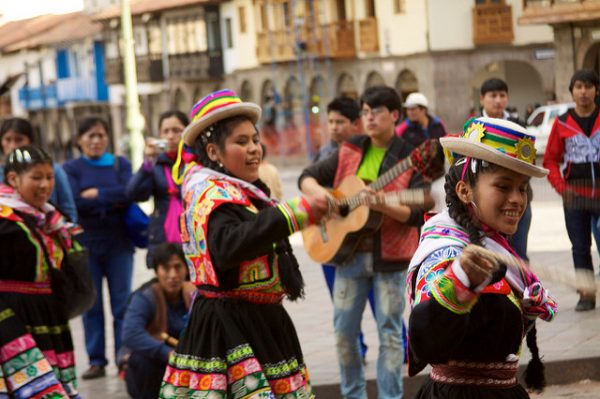
Dance is important as a form of expression, and for immigrant communities, dance can be a way to maintain a connection with their home countries. Drawing on their own experiences and heritage for a recent study, sociologists Hui Nui Wilcox and Erika Busse analyze dance performances by Peruvian and Chinese dance groups in the United States to demonstrate how dance is a way for immigrants and their families to foster a connection with their pre-migration identities and maintain “authenticity” as individuals within their particular ethnic group.
The authors discuss the concept of “authenticity” in two ways. First, there is authenticity on an individual level, wherein being authentic is a subjective experience based on individual details. Wilcox and Busse discuss interviews wherein Chinese and Peruvian immigrants describe participation in these dance groups as a way to construct their individual identity as an authentic member of their cultural group. At the same time, individual participants articulate specific reasons for joining the dance group which go beyond simply maintaining a connection to their home country, but include a complex set of reasons to participate such as having fun, maintaining positive body image, and fitness. For different members of these groups, dancing is a way to reaffirm both their ethnic identity and their individuality.
Then, there is authenticity on a community level, where a group’s image of authenticity is part of that group’s identity and shapes how others see them. As Wilcox and Busse describe, the dance groups foster Chinese and Peruvian communities’ sense of solidarity and national identity. Often, these dance groups perform at various cultural shows, international festivals, and other public events. These events are reflective of “multiculturalism,” or the ways that everyday Americans try to present themselves as modern and worldly by expressing interest in different cultures and traditions. What this means for the dancers and their families, however, is that some audiences watch these dance performances as further proof that immigrant communities are foreign or alien, a dynamic which generally affects non-white immigrants in particular.
Though participating in dance reflects a complex combination of individual decisions and collective experiences, everyday multicultural narratives can characterize immigrant Americans as outsiders or exotic. Thus, through their analysis, Wilcox and Busse demonstrate that dance performances intersect with greater issues of race, immigration, and the multicultural imperative.

Comments